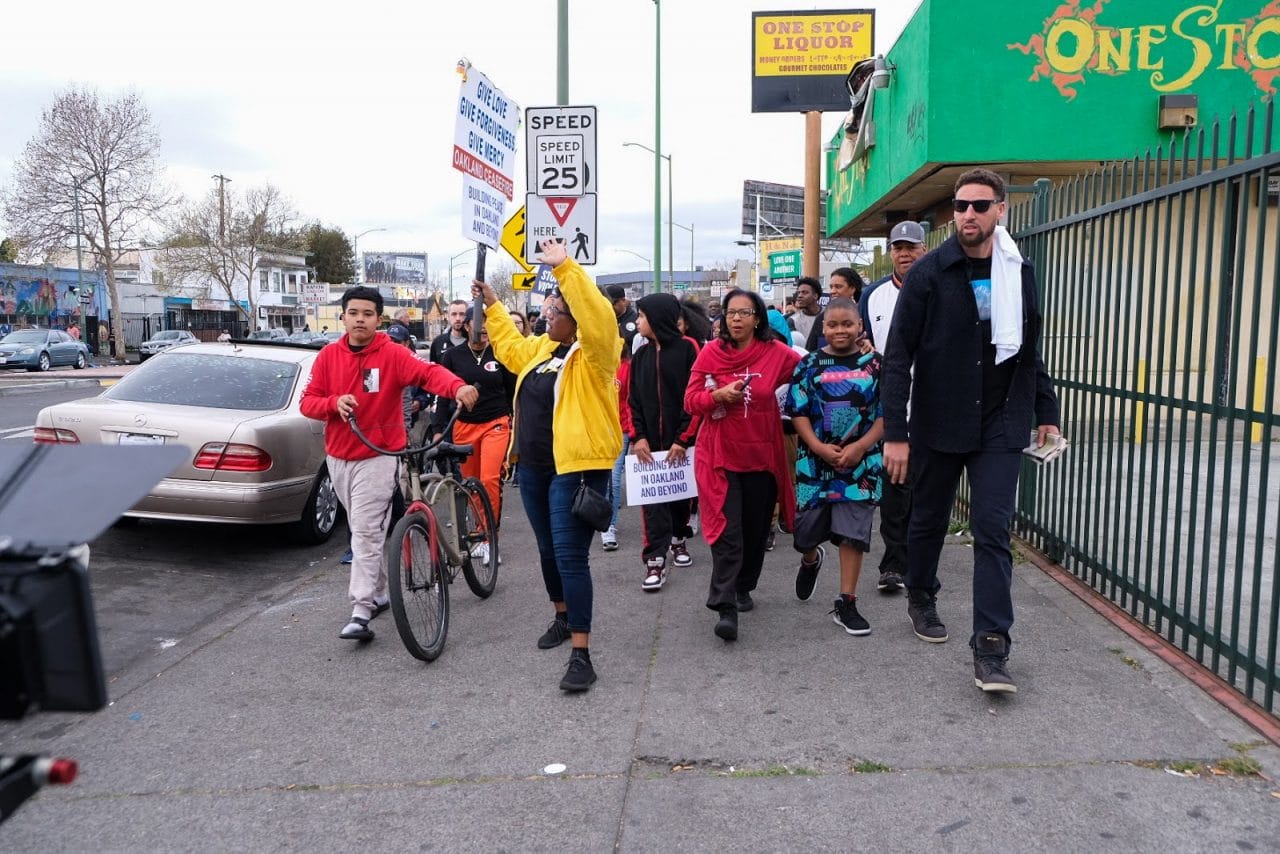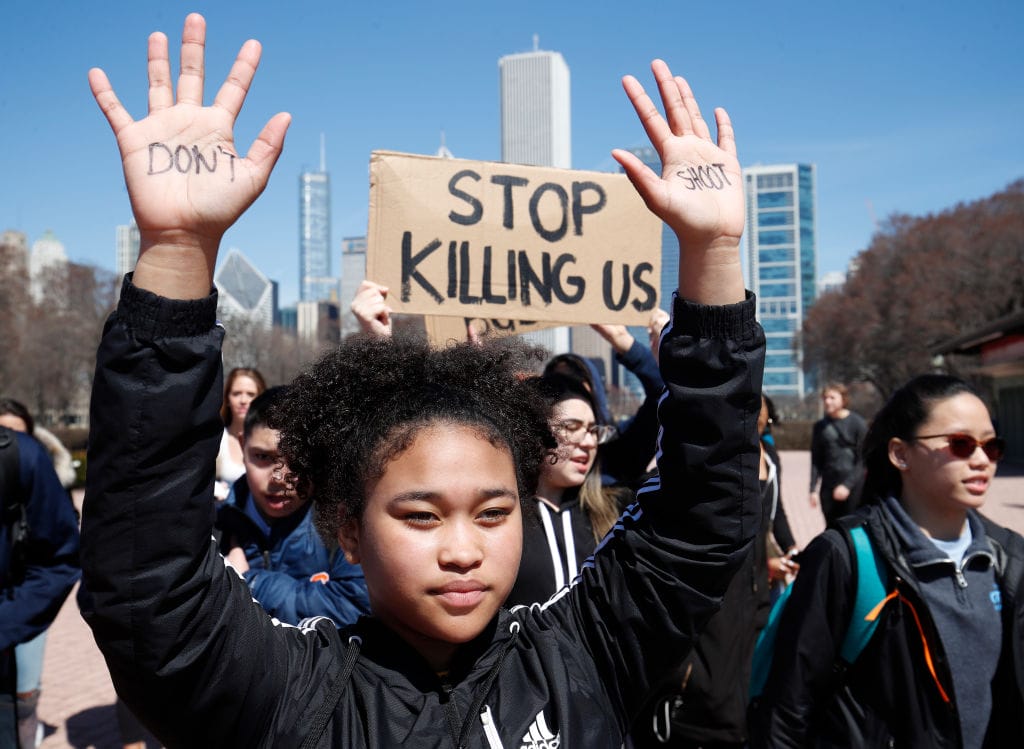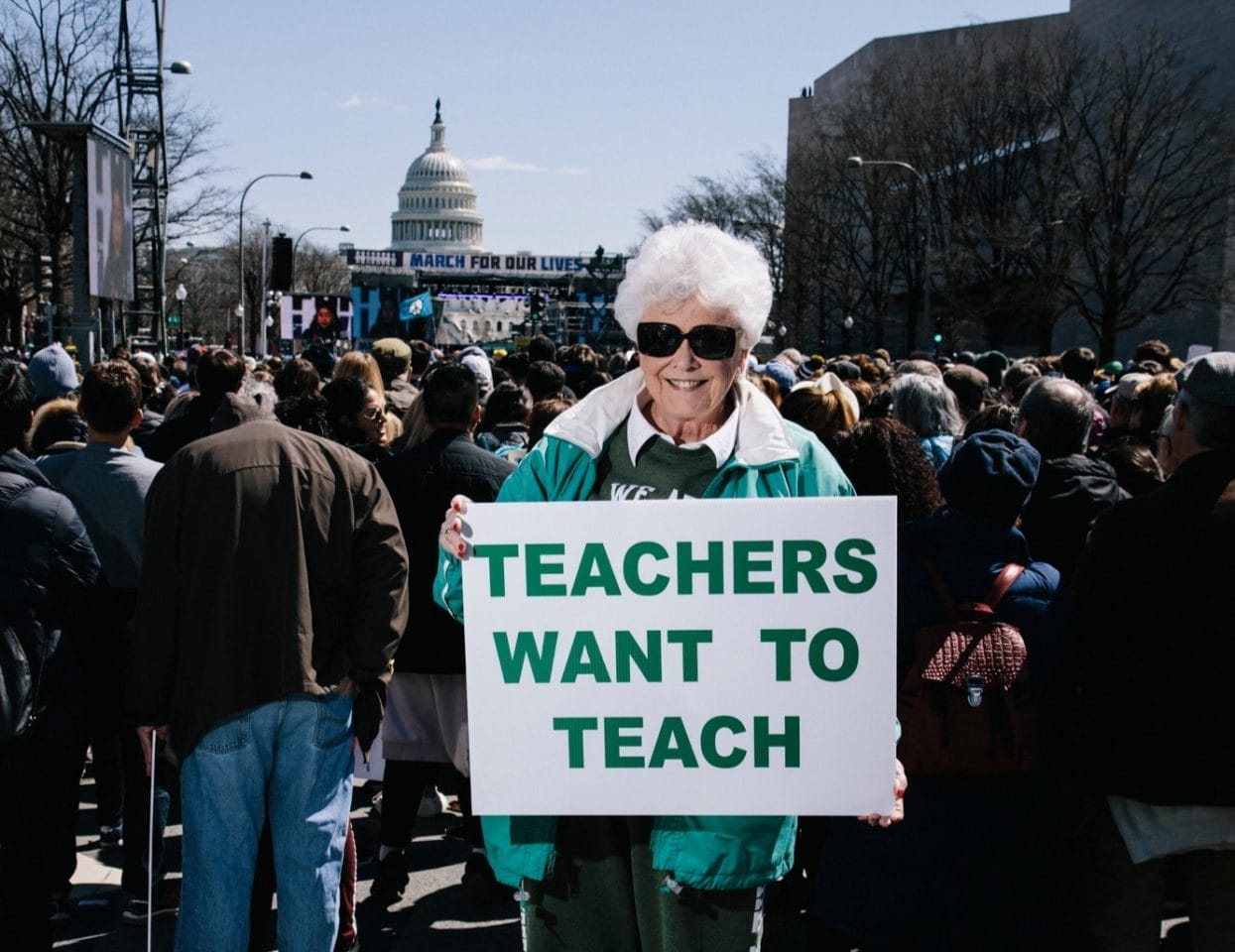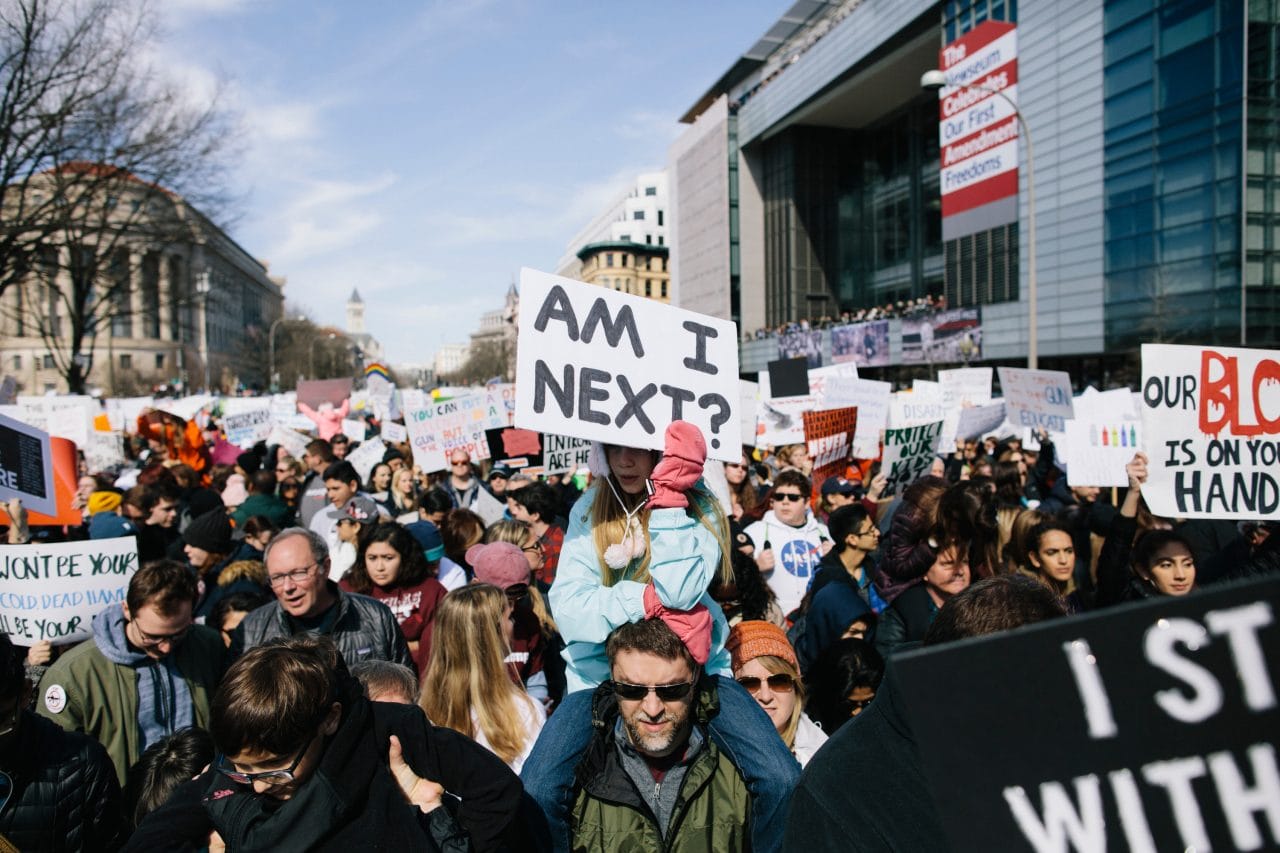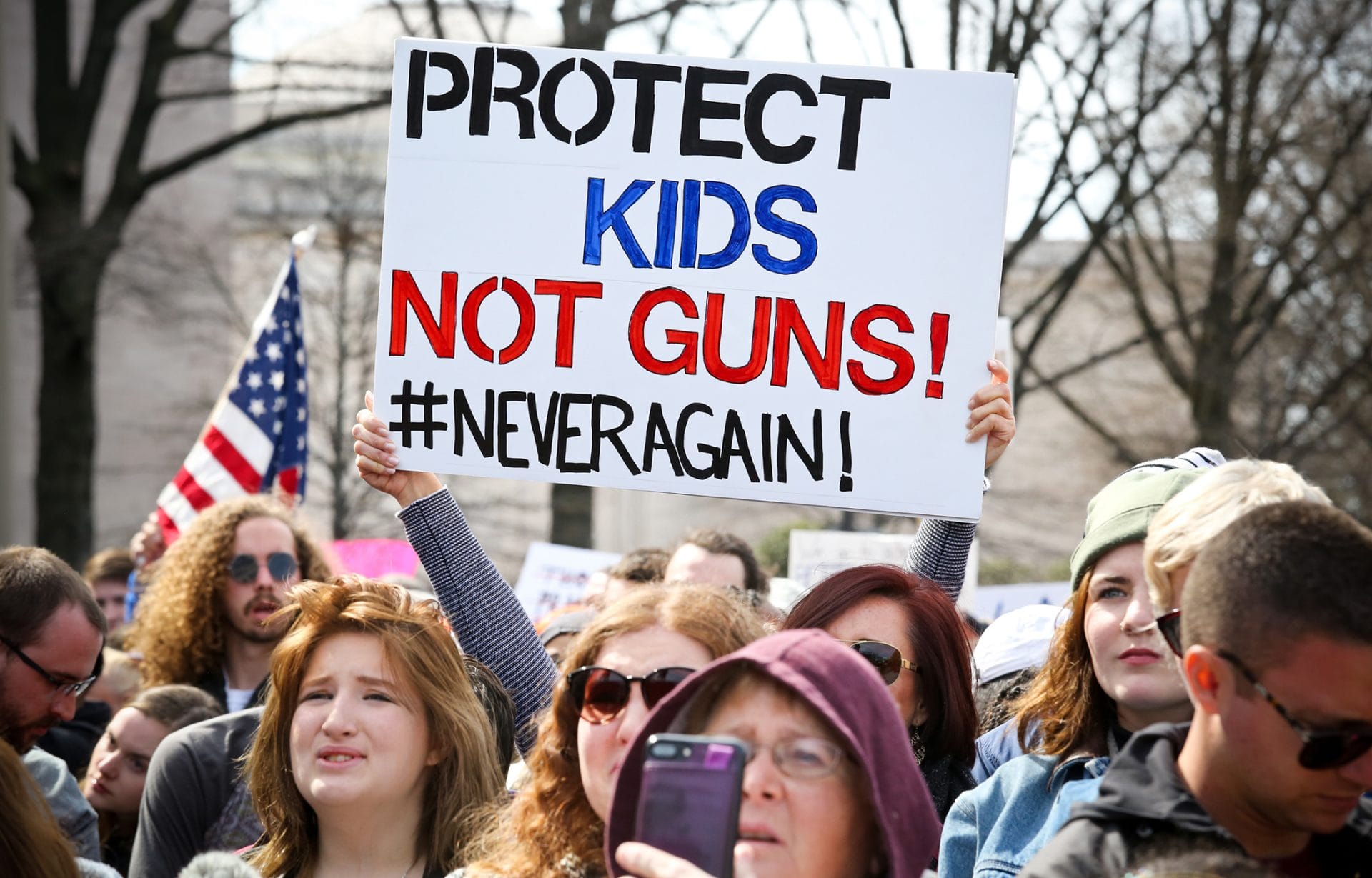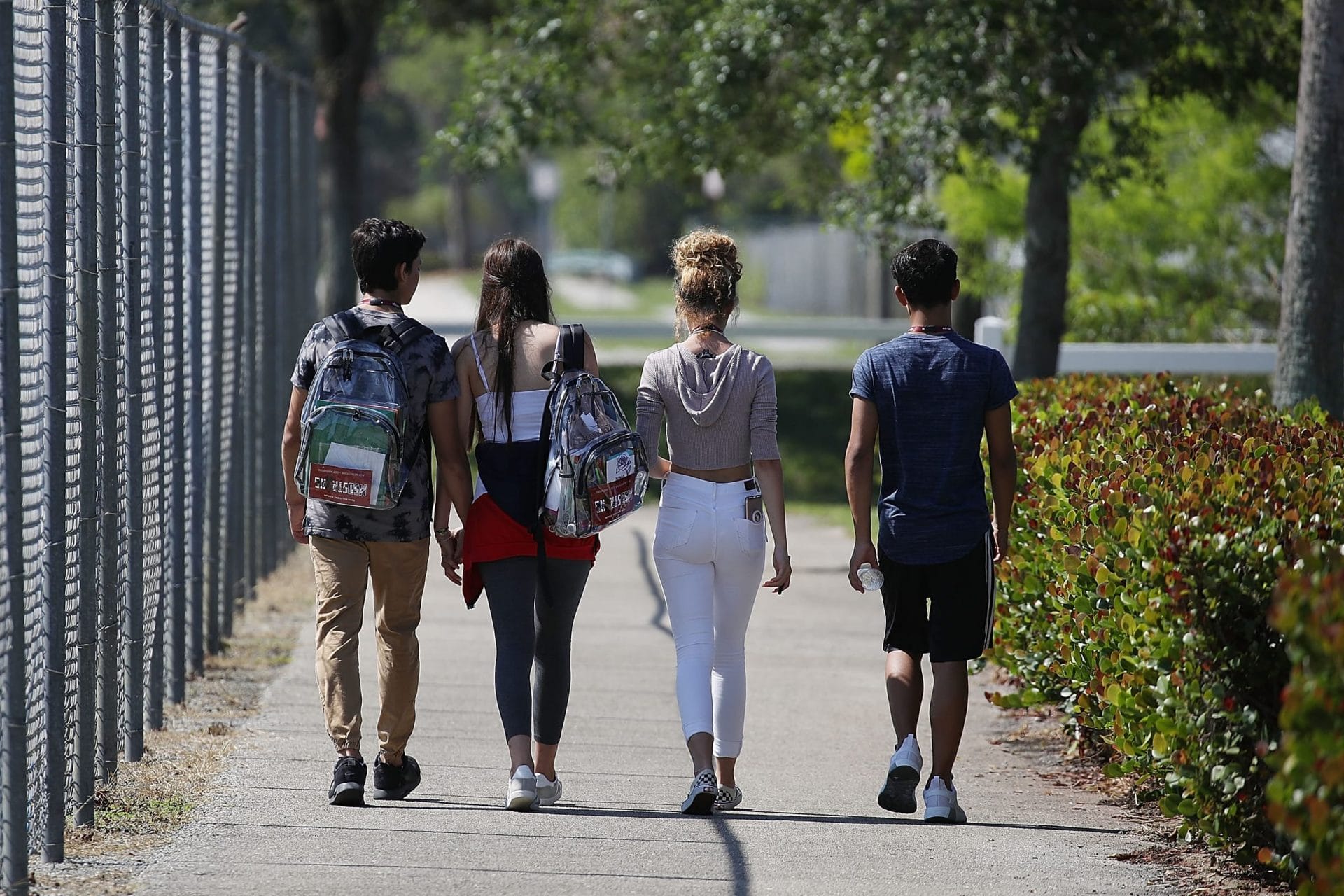
Back to School: Leaders Must Act to Stop School Shootings
Proven policies like child access prevention laws and raising the minimum age to buy a gun can save kids’ lives.
Begging parents for a new backpack, picking out a first day of school outfit, stocking up on fresh notebooks and pencils, these are the things families should be focused on as a new school year begins. Unfortunately, America’s families must add another item to their back to school checklist: how to keep their kids safe from school shootings.
Since 2020, gun violence has been the leading cause of death for children and teens in the United States—more than cancer and car accidents combined. It also disproportionately affects communities of color; in 2022 alone, Black children were over 18 times more likely to be killed in a gun homicide than white children. And in 2023, we saw the highest number of gun violence incidents reported on school grounds since formal tracking of these incidents began.
We must do more to keep our children safe, at school and at home—strong gun safety policies are central to that. Rather than accepting school shootings and other violence against children as the price of freedom, we need to take steps to ensure the safety of our kids by investing in policies and programs that work, and divesting from ones that don’t.

kids live in homes with a loaded, unlocked gun
Source
Deborah Azrael, Joanna Cohen, Carmel Salhi, and Matthew Miller, “Firearm Storage in Gun–owning Households with Children: Results of a 2015 National Survey,” Journal of Urban Health 95, no. 3 (2018): 295–304.; Matthew Miller and Deborah Azrael, “Firearm Storage in US Households with Children: Findings from the 2021 National Firearm Survey,” JAMA Network Open 5, no. 2 (2022).
Source
“Republicans Fuel Bump in Support for Stricter Gun Laws Following Nashville Shooting,” Eli Yokley, Morning Consult, April 4, 2023, https://pro.morningconsult.com/instant-intel/gun-laws-control-nashville-shooting.

School shootings on the rise across America
Source
David Riedman, K–12 School Shooting Database, (2023), https://k12ssdb.org/all-shootings.
Child Access Prevention & Safe Storage Laws
In the US, 4.6 million minors live in homes with at least one loaded, unlocked gun. Easy access to firearms in the home results in high rates of unintentional gun deaths among children, youth suicides, and school shootings. Studies show that between 70% and 90% of guns used in youth suicides, unintentional shootings among children, and school shootings perpetrated by shooters under the age of 18 are acquired from the home or the homes of relatives or friends.
Child access prevention (CAP) and safe storage laws promote responsible firearm storage practices and hold gun owners accountable for failing to take simple yet important measures to prevent guns from being used by children. Generally speaking, CAP laws impose a penalty on someone who fails to secure an unattended firearm and leaves it accessible to an unsupervised minor. In contrast, safe storage laws require unattended firearms to be secured in a gun safe or with a trigger lock.
Numerous studies over the past 20 years have found that CAP laws can reduce suicide and unintentional gun deaths and injuries among children and teens. One study found that these laws were associated with a 13% reduction in all firearm fatalities among 0–14 year olds; with demonstrated decreases in firearm homicides (15%), firearm suicides (12%), and unintentional firearm deaths (13%) for children of these ages.
Three key bills would address this tragedy in the 118th Congress:
- Rep. Rosa DeLauro and Sen. Richard Blumenthal’s reintroduced Ethan’s Law (H.R.660 / S.173), which would incentivize states to pass child access prevention laws and require gun owners to safely store firearms in their home.
- Rep. Mike Levin reintroduced the Prevent Family Fire Act (H.R.2770), which would provide tax credits for retailers to incentivize the sale of firearm safe storage devices.
- Rep. Sheila Jackson Lee reintroduced the Kimberly Vaughan Firearm Safe Storage Act (H.R.52), which would direct the establishment of best practices for safe firearm storage, require gun dealers to sell firearms with a “Safe Storage Saves Lives” label, and establish grants for the development of local government programs for acquiring and distributing safe storage devices.
Investing in Community Violence Intervention
While the national conversation about gun violence often focuses on mass shootings, especially those that occur at schools, in reality the epicenter of our country’s gun homicide crisis can be found in under-resourced communities of color, which experience elevated levels of gun violence in daily life. In addition to the physical danger gun violence presents, there’s been shown to be a correlation between children who are regularly exposed to neighborhood gun violence and resulting mental health issues—particularly depression and anxiety. In Philadelphia, for example, children who lived within a quarter-mile of a shooting were generally more likely to go to the emergency room for mental health distress.
By pairing gun safety reforms that help keep kids safe, like the policies discussed throughout this report, with meaningful investments in community violence intervention programs, young people are better positioned to maximize their potential, thrive academically, live safely, and fulfill their dreams. Community violence intervention (CVI) refers to non-punitive, community-led strategies designed to interrupt the transmission of violence by engaging those at the highest risk by providing tailored support services. CVI programs are essential and effective tools that help keep kids, schools, and communities safe from gun violence.
For example, in 2023, Detroit, which has dramatically increased its CVI investment in recent years, had its lowest number of homicides in nearly six decades. Local leaders have largely credited CVI organizations as an important element of the city’s public safety success. In recent years, St. Louis also significantly expanded its investment in CVI programs, and in 2023, the city reported its lowest murder rate in a decade and one of the biggest year-over-year reductions in violent crime in 90 years. In 2023, overall homicides in St. Louis were down by nearly 40% compared to 2020 levels.
Additionally, the CDC has found that universal, school-based violence prevention programs were specifically associated with reductions in violent behavior at all grade levels. The Bipartisan Safer Communities Act (BSCA), enacted in 2022, dedicated an unprecedented $2 billion to advance school-based efforts to reduce gun violence. This funding included $1 billion to expand Student Support and Academic Enrichment Grants, which invest in initiatives that reflect the needs of students, including drug and violence prevention programs, mentoring and school counseling, and positive behavioral interventions. $50 million was allocated to help expand the 21st Century Community Learning Centers Program, which supports activities for school-aged children during non-school hours. The funding also included $1 billion to expand the School-Based Mental Health Services Grant Program and the Mental Health Service Professional Demonstration Grant Program. The former helps to increase the number of qualified mental health service providers that render school-based mental health services to students in local education agencies with demonstrated need, and the latter supports innovative partnerships to train school-based mental health service providers for employment in schools.
CVI Bills in the 118th Congress:
- Rep. Jahana Hayes introduced the School Violence Prevention Act (H.R.6754), which would establish a grant program to fund school-based violence prevention programs for youth at the highest risk for involvement in gun violence.
- Rep. Steven Horsford and Sen. Cory Booker reintroduced the Break the Cycle of Violence Act (H.R.5003 / S.2638), after passing the House last Congress, which would authorize $5 billion over eight years for new grant programs to support violence intervention initiatives.
Raising the Minimum Age to Buy Guns
People ages 18 to 20 are responsible for perpetrating a disproportionate share of school shootings, public mass shootings, and gun homicides overall. In fact, this age group comprises just 4% of the US population but accounts for 17% of known gun homicide offenders. Because impulse regulation and emotional control continue to develop into the mid-20s, young people, including adolescents and people under 21, are also at elevated risk of attempting suicide. Minimum age laws make it illegal for young people to purchase or possess firearms, in turn making it harder for them to carry out acts of violence against themselves or others. States with minimum age laws have seen significant declines in firearm suicides and other types of gun violence among young adults and children.
The Bipartisan Safer Communities Act established enhanced background checks for gun buyers under the age of 21. Federal law allows licensed gun dealers to sell long guns (rifles and shotguns) to buyers who are 18 years of age or older, while handguns can only be sold to buyers 21 years of age or older. As of June 2024, these enhanced background checks have stopped 800 sales of firearms to young people who were prohibited from purchasing firearms. This represents a 25% increase in the number of firearm background check denials to individuals under the age of 21. Despite this progress, federal law still provides no minimum age for the possession of long guns or long gun ammunition.
Minimum Age Bills in the 118th Congress:
- Rep. Glenn Ivey reintroduced the Raise the Age Act (H.R.2870), which would raise the minimum age to purchase certain semiautomatic rifles and shotguns from 18 to 21 years old.
- Sen. Dianne Feinstein reintroduced the Age 21 Act (S.14), which would raise the minimum age to purchase large capacity ammunition feeding devices and semiautomatic assault weapons from 18 to 21.
Firearm Prohibitions
One of the most effective ways to combat gun violence and keep children safe is by passing laws to prevent people who are prohibited or otherwise exhibiting signs of dangerousness from having access to firearms. Universal background checks, extreme risk protection orders (ERPOs), and other firearm-prohibiting protective orders (such as domestic violence restraining orders) are some of the best tools we have to prevent tragedies before they occur. When properly implemented, these tools make sure that those who are a danger to themselves or others are not in the possession of a firearm.
Background checks help gun sellers identify individuals who are ineligible to purchase firearms, and are generally most helpful at preventing gun purchases at the point of sale. Also known as “red-flag laws,” ERPOs typically empower families, household members, and law enforcement agencies to petition courts for a civil (non-criminal) order to temporarily suspend firearm access for a person who has demonstrated an extreme risk of violence or self-harm, including by requiring a person to relinquish any firearms in their possession. Domestic violence protective orders and other similar orders often temporarily prohibit firearm and ammunition purchase and possession while the order is in effect.
Since the federal background check requirement was adopted in 1994, nearly 4.7 million people legally prohibited from possessing a gun have been stopped from purchasing a gun or were denied a permit to purchase one. Additionally, a recent study found that among 626 ERPO cases across six states, 21% of those who had ERPOs imposed on them were planning to attack schools—the most common target among all cases. Limiting dangerous individuals’ access to firearms saves lives, protects our communities, and makes our schools safer.
Firearm Prohibition Bills in the 118th Congress:
- Rep. Brian Fitzpatrick reintroduced the Bipartisan Background Checks Act (H.R.715) after it passed the House under Rep. Thompson’s introduction last Congress. This legislation would require a background check for all gun sales and transfers, with exceptions for family members, self-defense, law enforcement, and hunting/target shooting.
- Sen. Chris Murphy reintroduced the Background Check Expansion Act (S.494), which would expand federal background checks to all gun sales, including those from unlicensed or private sellers at places like gun shows and online.
- Rep. Lucy Mcbath reintroduced the Federal Extreme Risk Protection Order Act (H.R.3018) after it passed through the House last Congress. This legislation would authorize and establish a procedure for federal courts to issue extreme risk protection orders and incentivize state and local governments to pass their own extreme risk laws.
- Rep. Jim Himes and Sen. Richard Blumenthal both reintroduced the Lori Jackson-Nicolette Elias Domestic Violence Survivor Protection Act (H.R.6405 / S.3303), which would prevent those subject to a temporary restraining order from purchasing or possessing a firearm and extend protections to domestic violence survivors who have been abused by their dating partners.
HERE TO HELP
Interested in partnering with us to draft, enact, or implement lifesaving gun safety legislation in your community? Our attorneys provide free assistance to lawmakers, public officials, and advocates working toward solutions to the gun violence crisis.
CONTACT US
Arming Teachers
For years, the gun lobby has pushed policies to arm teachers and allow other adults to carry guns on K–12 campuses. However, a study published in March 2019 found “no evidence that the presence of resource officers in schools lessened the severity of school shooting incidents.” And there is no indication that armed teachers would prove any more effective. In fact, evidence suggests that if teachers possessed guns on K–12 campuses, it would likely increase, rather than decrease, students’ exposure to gun violence. Furthermore, there is no evidence that perpetrators of mass shootings intentionally seek out their targets based on whether or not civilians are prohibited from having guns in that space. Most mass shooters target a specific person, group, or institution with whom they have a grievance, which is why the vast majority of school shooters are current or former students of the school.
For decades the gun lobby has repeated the false statement that “the only thing that stops a bad guy with a gun, is a good guy with a gun.” But time and time again this anecdote has been proven false. People successfully defend themselves with guns in less than 1% of crimes in which there is contact between a perpetrator and a victim. An FBI analysis of 160 active shooter incidents from 2000—2013 found that active shooter incidents were rarely stopped by armed individuals who were not law enforcement returning fire. In fact, four times as many shootings were stopped by unarmed civilians restraining the shooter. There is no evidence to suggest that armed teachers in a school environment would find more success. More guns is not the solution to the problem of gun violence.
Active Shooter Drills Not Focused on Minimizing Trauma
Active shooter drills in schools are designed to prepare students, faculty, and staff on how to deal with emergency situations. However, some types of drills have been shown to be far more effective at preparing students in safe and healthy ways than others.
Drills and trainings that mimic or simulate active shooter scenarios have actually been shown to increase levels of fear and anxiety among students. Drills of this nature may in fact be harmful to students’ mental health. However, drills that are trauma-informed and sensitive to mental health concerns have been shown to empower students. These types of drills—which may include students talking through what to do if there is an active shooter or practicing activities like turning off the lights and locking doors—have been shown to lower rates of anxiety and fear among students, while also increasing their levels of preparedness. Schools should assess how they are preparing for shooting incidents to ensure that students understand how to respond in emergency situations, without forcing students to incur unnecessary trauma.
In the 118th Congress, Rep. Brittany Pettersen introduced the bipartisan School Safety Drill Research Act (H.R.3872), which would require the study of the possible mental health effects of active shooter and lockdown drills on students, faculty, and staff, and the identification of best practices to maximize the effectiveness of school safety drills. As suggested by this bill, students’ mental health and well-being must be prioritized, especially when dealing with the very real and very frightening matter of school shootings.
As the school year begins, parents hug their children and send them off to the classroom, often sitting with an uneasy, underlying fear that their child may not come home, a victim of the next preventable gun violence tragedy.
While threats from gun violence can come from both inside and outside the home, we can and must do better to protect our children and make our communities, and schools in particular, a safer place. Approaches like arming teachers and school shooter drills are reactive policies; what we need are proactive policies that reduce conflicts and prevent people who wish to cause harm from obtaining firearms and entering schools in the first place.
There are a variety of evidence-based, proven solutions that we know are successful when it comes to keeping our kids safe from shootings. These look like the policies discussed throughout this report: safe storage and child access prevention laws, investments in community violence intervention, raising the minimum age to buy guns, and effectively implementing firearm prohibitions like background checks and extreme risk protection orders.
Kids should be worried about learning fractions, practicing lines for the school play, and scrambling to finish their homework before the bell rings, not where in the classroom they’ll need to hide from a shooter.

TOOLKIT
FROM HEALING TO ACTION
From Healing to Action: A Toolkit for Survivors was created in partnership with Sandy and Lonnie Phillips, who lost their daughter Jesse in the 2012 Aurora, CO, shooting, to guide survivors through the aftermath of gun violence. Using the voices of other gun violence survivors, they’ve outlined helpful tools for navigating those first few weeks after tragedy and using your voice to advocate for change.
Read More
